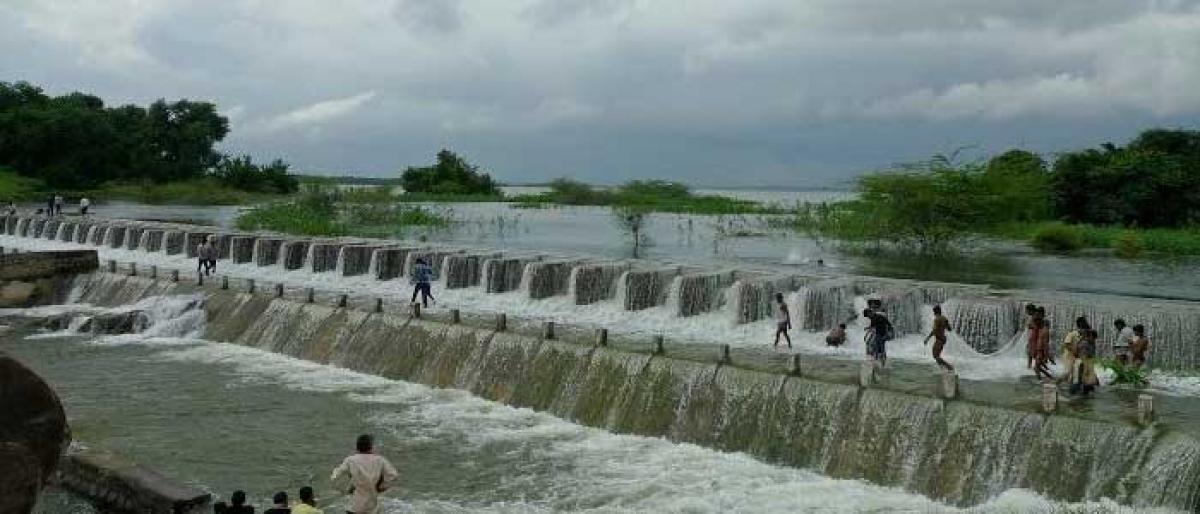Live
- Sujana Chowdary files papers for Vijayawada West
- TDP-BJP-JSP leaders file Lokesh’s nomination
- Hyderabad: Opposition indulging in divisive politics says BJP MP Laxman
- Ajith Kumar shows up to vote 30 minutes before time; Rajini stresses 'dignity in voting'
- Velapalli, Bonda Uma engage in war of words on stone incident
- Accused in stone pelting case arrested
- Watch The Viral Video Of A Woman Wearing Bikini Into Crowded Delhi Bus
- AAP Nominates Mayor and Deputy Mayor Candidates For Delhi MCD Elections
- Hyderabad: Eatala, Raghunandan, DK Aruna file nomination papers
- Chandrababu to hold Praja Galam election campaign in Kurnool today
Just In

We visited Medak last summer, which is actually not the best season given the dry and hot climate at this time of the year. Ideally one should visit after September.
We visited Medak last summer, which is actually not the best season given the dry and hot climate at this time of the year. Ideally one should visit after September.
The Medak Fort, earlier known as Metukudurgam, was our first stop. The large fort was built by Kakatiya king Pratap Rudra II and later taken by the Bahmanis and Qutub Shahi rulers.
The large and imposing fort has much historical significance in this region though it is now partially dilapidated. The large fort is spread over nearly 50 acres and has two fortification walls.
A flight of steps cut into the rock-face provides access. This was the Kakatiyas’ Giridurgam—i.e. a fort built on a hillock (as different from jaladurgam and vana durgam or forts surrounded by water or in a forest respectively.
This was used by them as a defence and lookout point, unlike their residential Warangal Fort. Later, the Qutub Shahis added different structures one sees like the battlement walls, horse and elephant stables, durbar hall, masjid, parapet walls, etc.
Most of the surface of the walls along the steps were moss-covered. The Fort has several large gates. There is the Prathama Dwaram or First Entrance with the sculpture of Gandabherunda or two-headed bird carved above it. Then there is the Simha Dwaram with two snarling lions facing off, and Gaja Dwaram, which has interlocked elephants.
Along with other tourists, we took pictures at the 3.2 metre-long cannon from the 18th-19th century (Asaf Jahi period) which has a trident etched on it.
The summit has a mosque which was closed when we reached. From the summit one can get a great view of the town and its buildings including the famous Church, surrounding paddy fields and rural settlements.
Next, we visited the cathedral church of the Diocese of Medak for the Church of South India (formerly Anglican) simply known as Medak Church. The bell-tower of the church at a height of 175 ft is visible from a long distance away.
The church with its pink-hued exterior walls was built by Reverend Charles Posnett had its foundation in 1914 and was finally consecrated in 1924. It can accommodate 5,000 people. It is the largest in its category in Asia.
There were massive grey stone pillars supporting the edifice, and colourful mosaic tiles on the floor imported from Britain. The beautiful stained-glass work all round took our breath away.
The large and imposing altar with a huge stained-glass work depicts the ascension of Jesus to divinity. We were told that jute and lime were used for the false ceiling to make it sound proof.
The next morning had us heading to Pocharam Wildlife Sanctuary and Reservoir. It is about 15 km away from the town and takes its name from the large Pocharam Lake. Permission from forest authorities is needed to enter the interiors.
Spread over 130 sq km the sanctuary is home to a wide variety of wildlife like leopards, sloth bear, spotted deer, wild boar, sambar, chowsingha or four-horned antelope, nilgai, wild boar, chinkara, mongoose and hares. There are many reptiles too. There are the Indian cobras, pythons, and other snakes.
There are two Deer Breeding Centres, which house several species of deer. There is birdlife too in this area like painted storks, Indian pangolin, quails, grey-billed hornbills, which you are most likely to find in the small waterbodies that dot the sanctuary.
We were advised that the best sightings of water birds were at Pocharam Reservoir, which adjoins the forest. This was, however, not the best time. Between December and February, you get to see hundreds of migratory birds like flamingoes, Brahmini ducks, black ibis, white ibis, storks, and openbill storks. There are crocodiles too in these waters. In the middle of Pocharam Reservoir is a small island which acts as a nesting ground for birds.
In the late evening, we visited he Vana Durga Bhavani temple at Nagasanapalli. It is one of the most popular Durga temples in this region and draws lakhs of pilgrims during Shivaratri, which is followed by a Bandi Utsavam i.e. Bullock Cart Festival.
This entire festival popularly referred to as Yedupayala Jatara is considered the second biggest festival in this region after the Medaram Jatara.
There is a point near the sanctum-sanctorum where seven rivulets named respectively after the great Saptarishis or seven sages of Hindu belief meet, giving the temple the prefix Yedupayala.
It is customary for the devout to take a ritual bath in these waters. However, it is not possible to clearly discern seven separate streams at a casual glance and some effort, and search is needed for this.
A short drive away, we also discovered a little gem at Nandikandi village – the star-shaped Ramalingeswara temple from the Kalyana-Chalukyan period or 12th century.
It is considered by some archaeologists to be a rare temple in the state. Also worth visiting is a Jain temple at Kolcharam, near Medak, with a massive 10th-century Parashwanath idol.

© 2024 Hyderabad Media House Limited/The Hans India. All rights reserved. Powered by hocalwire.com







